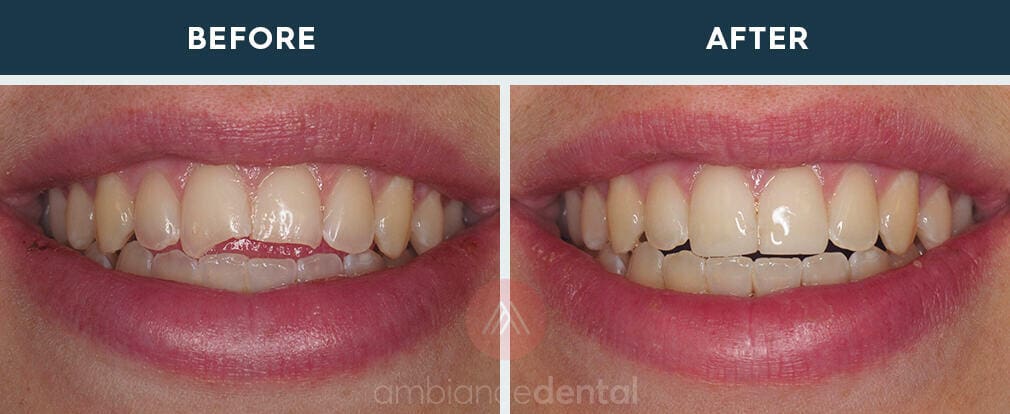What Is Dental Bonding?

Dental bonding is a treatment where a durable tooth-coloured material is applied to your tooth and sculpted to create a new, natural-looking tooth. It’s a minimally invasive procedure that can restore or improve your smile.
Dental bonding is a non-invasive way to restore the beauty of your teeth without removing any or minimal tooth structure. It is a unique skill that allows the dentist to use artistry to perfect the canvas that is your tooth.
DENTAL BONDING IS IDEAL FOR:
- Repairing chipped or cracked tooth
- Closing spaces between your teeth
- Making your teeth look longer
- Perfecting the shape of your teeth
- Protecting the root of an exposed tooth, caused by receding gums
- Improving the appearance of discoloured teeth
By the end of a single dental appointment, we will have hand-painted multiple shades of tooth coloured resins onto your tooth. This is followed by a sculpting process that allows us to shape the tooth into its natural vibrant form. This skill is not taught in dental school and many of the masters learn from the guru of dental bonding, Dr. Newton Fahl from Brazil.
First, we start with a dental consultation where we look at photos of your current smile and assess how it appears in relation to your lips and full face. Many patients do not appreciate chipped or discoloured teeth and wish to restore their teeth to a youthful smile again.
Secondly, we can use stone models of the teeth to first sculpt wax into the ideal shape and contours of the teeth. These models are shown to the patient so we can use their feedback to craft a smile that is truly their own.
Once the patient has helped to design their ideal smile, an appointment is booked where the natural tooth is then cleaned and polished. A natural tooth consists of a clear crystal layer called enamel, and underneath a more opaque yellow layer called dentin. It requires 3-5 shades at minimum to hand paint the tooth layer by layer. This allows the light to shine and reflect a natural appearance so no one can tell where the tooth or resin starts. Contouring completes the re-creation of the natural shape of the tooth.
Pros Of Dental Bonding:
Bonding is completed in one appointment after your consultation so it is quicker than other restorative options such as veneers or crowns. It requires minimal loss of enamel, unlike veneers or dental crowns.Bonding is also less expensive than most other cosmetic treatments. Bonding can be repaired with minor chips and if taken care of properly, can last a few years.
Cons Of Dental Bonding:
The material used for bonding is a composite resin, therefore, it is not as strong as porcelain, which is used in veneers. It has a higher risk of chipping and is more prone to staining due to its porous nature. It can be more difficult to mask very dark and discoloured teeth with resin material. The ability to get an excellent result depends primarily on your dentist’s artistry and their ability to manipulate materials. Bonding for minor repairs is relatively simple, but cosmetic bonding for an entire smile is very challenging. For this reason, cosmetic bonding carries a higher fee than a dental filling to address a cavity. It takes considerably more clinic time and skill on the part of the dentist.
This is an amazing transformation that can be completed in a single visit. Our patients have benefited from the mastery of dental bonding offered by Dr. Wasik and Dr. Nagra.
Check out their patient gallery to see the transformation many of our patients chose to perfect their smile.
